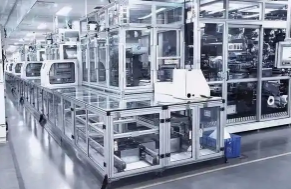As industries seek to increase efficiency, reduce costs, and enhance safety, the shift towards automation is accelerating. This article explores the latest trends in automation, the future applications of automated machinery, and the vital importance of high-quality machinery components in the successful deployment of automation technologies.
Exploring the Trends in Automation
Automation is not a new concept, but advances in AI, robotics, and IoT (Internet of Things) have propelled it to new heights. Current trends include:
- Increased Use of AI: Artificial intelligence is being integrated into automated systems, allowing machines to make decisions and improve operations without human intervention.
- Robotics: Robots are becoming more sophisticated and capable of performing complex tasks. From manufacturing lines to surgical tables, robotics technology is becoming an integral part of automated solutions.
- Internet of Things (IoT): IoT devices collect and analyze data in real time, optimizing performance and predictive maintenance schedules of automated systems.
Future Applications of Automated Machinery
The potential applications of automated machinery continue to grow across various sectors:
- Manufacturing: Automation can increase production rates, improve product quality, and enhance safety by performing high-risk tasks previously handled by humans.
- Healthcare: From robotic surgical systems to automated diagnostic tools, automation is set to revolutionize medical treatments and patient care.
- Agriculture: Automated machinery can perform a range of tasks from planting seeds to harvesting crops, helping to increase crop production and reduce labor costs.
- Automotive Industry: Automated processes in the automotive industry are not just about manufacturing but also extend to autonomous driving technology.
- Supply Chain and Logistics: Automation can streamline supply chains, from automated warehouses managed by robots to delivery drones and autonomous freight systems.
The Importance and Characteristics of Machinery Components in Automation
The success of automated systems heavily relies on the quality and reliability of their components. Key aspects include:
- Precision and Durability: Components must be designed to exact specifications to ensure smooth operation and long service life. High precision parts minimize the risk of malfunctions, which is crucial in automated systems where downtime can be costly.
- Integration Capability: Machinery components must be compatible with existing systems and new technologies. This includes the ability to integrate with digital interfaces and network connectivity.
- Material Quality: The choice of materials affects the performance and durability of components. Advanced materials that can withstand high pressure, temperature variations, and corrosion are increasingly important.
- Maintenance and Support: High-quality components are designed for easy maintenance and replacement, which is essential for minimizing downtime and extending the lifecycle of the automated system.
Conclusion
Automation is transforming industries by improving efficiency, quality, and safety. The role of specialized machinery components cannot be overstated, as they are the building blocks that ensure the reliability and effectiveness of automated systems. As we look to the future, the integration of AI, the expansion of robotic applications, and the strategic implementation of IoT technologies will drive further advancements in automation. Investing in high-quality components is not just a necessity but a strategic decision that impacts the overall success of automation initiatives in any industry. Concluding, the future of automation offers exciting possibilities and is an area ripe with opportunities for innovation and growth.






